Garden Structures: Blending Beauty and Functionality
Dreaming of a backyard transformation? Garden Structures Ideas possess the power to convert a plain yard into a vibrant sanctuary. Bold, functional designs capture the essence of outdoor living, offering both charm and practicality.
Not all structures serve the same purpose; some act solely as decorative accents while others extend your living space outdoors. Select designs that balance visual appeal with real-world use, and watch your garden become a private retreat.
The secret lies in blending beauty with function, where design meets practicality to create a haven for relaxation, privacy, and creativity. Think of it like Marie Kondo meets Frank Lloyd Wright—creations that spark joy and serve a purpose.
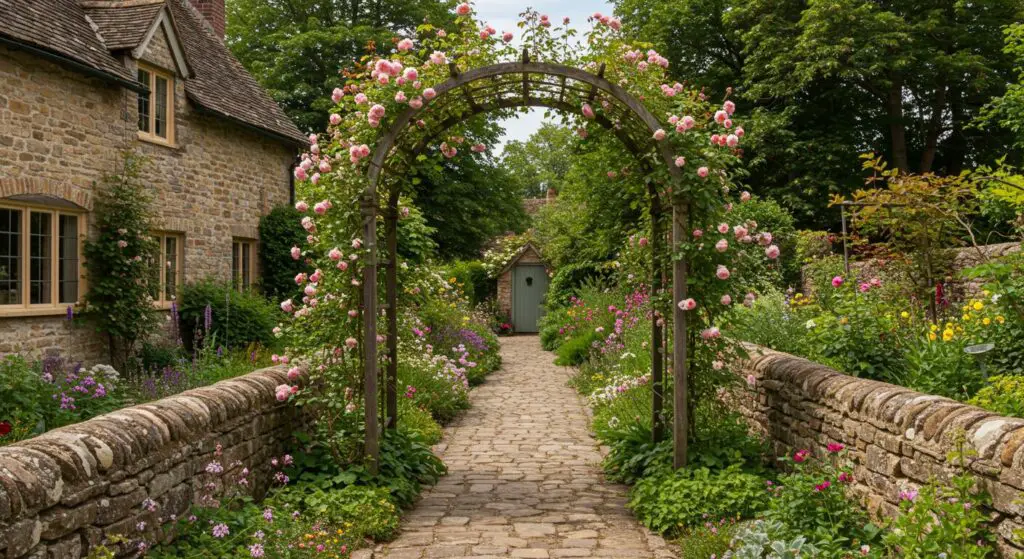
Garden structures serve many roles in outdoor spaces. They provide shade, add privacy, and act as eye-catching focal points. Whether you favor timeless designs or modern forms, these elements can turn a simple yard into a versatile extension of your home. Structures such as pergolas, gazebos, and decorative features offer both function and style. They create opportunities for outdoor dining, relaxing, or hosting small gatherings.
For readers seeking more design tips, check out our article on Backyard Design Ideas for additional inspiration and practical advice.
A well-planned garden structure can become the centerpiece of your outdoor area. Whether you want to create a quiet nook for reading or a lively space for entertaining, various options are available. From enclosed raised beds that foster vegetable growth to open-air pavilions ideal for summer parties, each design option plays a unique role. The range of ideas presented in this article covers everything from classic pergolas to innovative enclosures, offering a guide for every garden style.
Pergolas, Gazebos, and Pavilions: Creating Outdoor Rooms
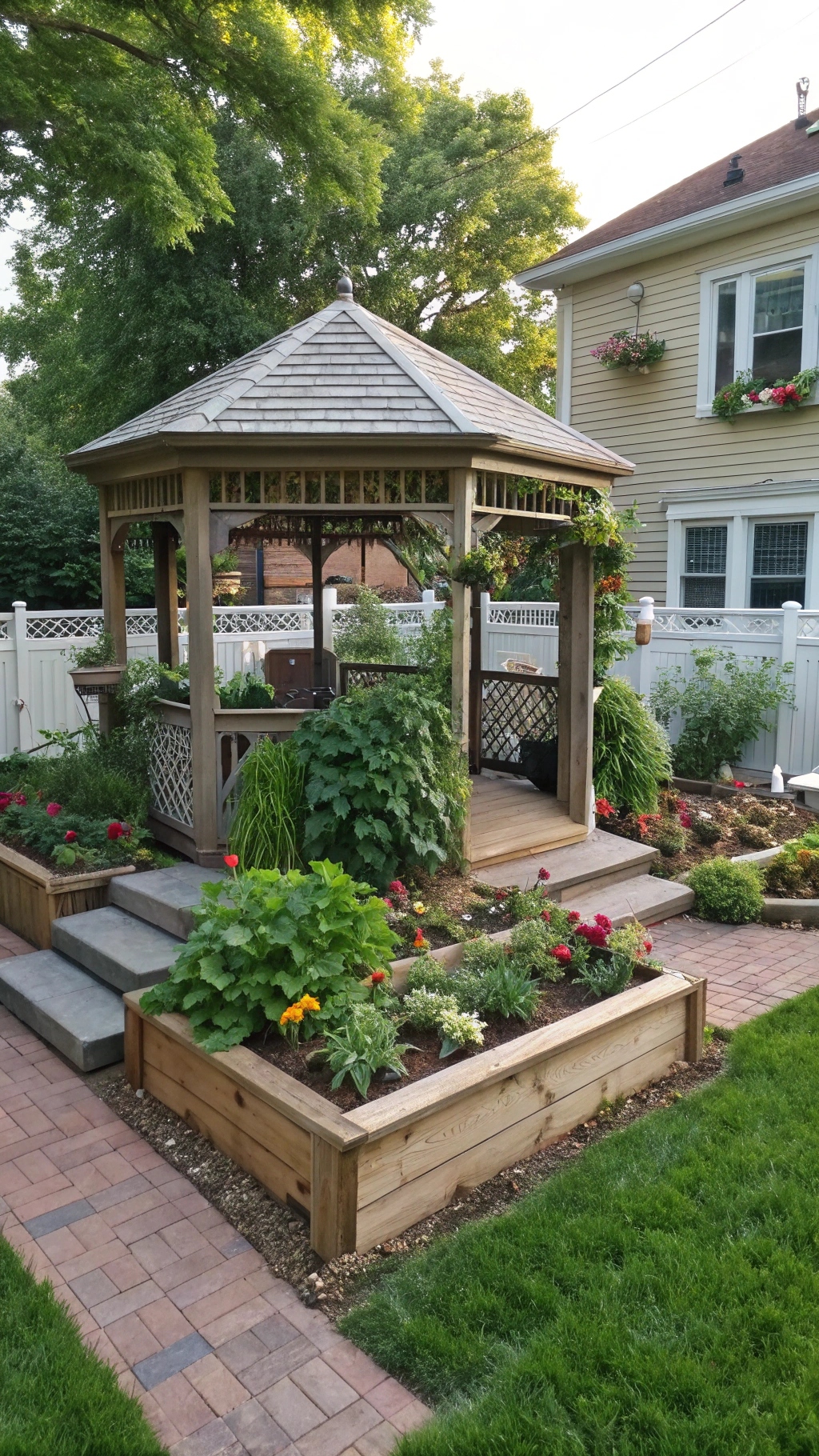
Garden structures such as pergolas, gazebos, and pavilions add extra charm to any outdoor space, transforming your backyard into a series of inviting rooms. Pergolas serve as open frameworks that support climbing plants and provide dappled shade during warm days. Gazebos offer a fully covered area ideal for outdoor dining or quiet reflection. Pavilions often cover larger spaces, making them perfect for family gatherings or social events. Each option falls under innovative Garden Structures Ideas that blend beauty with practicality.
What Are They?
Pergolas are designed as airy, open structures made from wood or metal, often enhanced by the natural growth of vines and flowers. Gazebos feature a solid roof and are sometimes enclosed by screens, creating a cozy environment for relaxation. Pavilions extend over larger spaces, defining zones for outdoor activities. Their varied designs allow for a mix of artistic expression and functional outdoor living.
Practical Uses
- Pergolas offer a shaded retreat and support for climbing flora.
- Gazebos create sheltered spots for meals, reading, or quiet contemplation.
- Pavilions provide space for parties, outdoor work areas, or gatherings. These designs cater to diverse needs, ensuring your garden remains both aesthetically pleasing and useful.
Design Variations
Different materials, shapes, and sizes accommodate a range of tastes and functions. Traditional wooden structures create a warm, natural look, while modern metal designs offer sleek lines and durability. Circular gazebos or rectangular pavilions can be chosen to match your preferred style.
Pro Tip
Consider enhancing these outdoor rooms with string lights, curtains, or weather-resistant furniture to boost both style and comfort.
Privacy Structures: Building Secluded Retreats
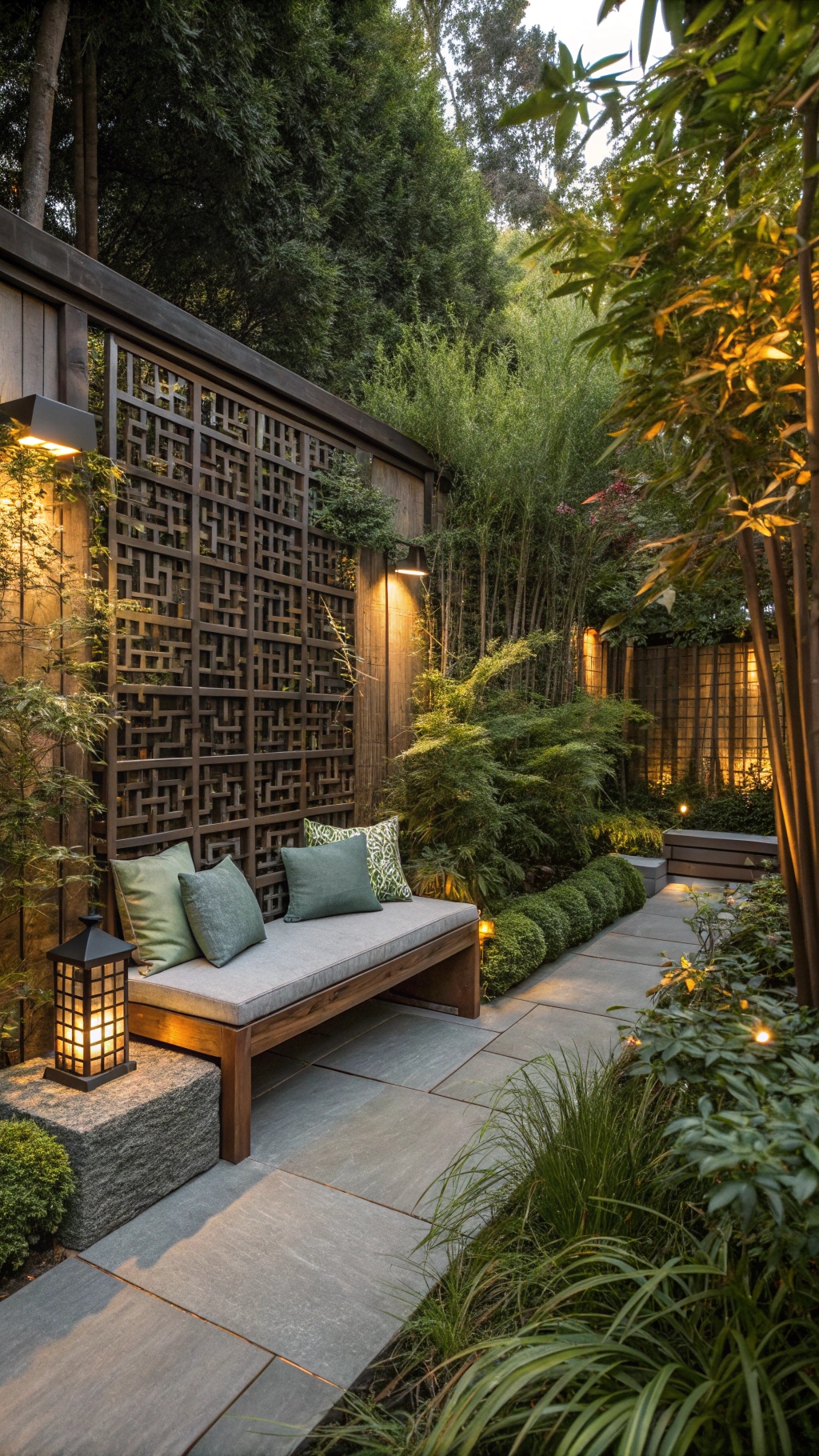
Creating secluded areas within your backyard can offer a peaceful escape from the hustle of daily life. Privacy structures help define intimate spaces, shielding you from noise and prying eyes. Homeowners often turn to features like tall lattice panels, bamboo screens, or enclosed pergolas to create these personal sanctuaries. Such structures not only serve a functional purpose but also contribute to the overall charm of your outdoor living area, perfectly aligning with inspiring Garden Structures Ideas.
Why Privacy Matters
A dedicated private area enhances tranquility and encourages relaxation. In a busy neighborhood, a secluded spot can serve as a personal retreat for reading, meditating, or simply enjoying nature. These structures can reduce distractions and add an element of comfort to your backyard, ensuring that outdoor time is both refreshing and undisturbed.
Creative Solutions
Tall lattice panels act as subtle dividers that allow light to filter through while providing necessary separation. Bamboo screens introduce a natural texture and a sense of warmth to your space. Circular domes or arbors create intimate nooks that invite quiet reflection. Each option reflects a balance between aesthetic appeal and functional privacy, turning your garden into a personal haven.
DIY Corner Ideas
Simple projects using reclaimed materials offer budget-friendly ways to create private retreats. Constructing a small bench surrounded by recycled wood panels or repurposed metal accents can carve out a unique nook. These hands-on projects not only add personality to your garden but also provide a sense of accomplishment, resulting in a space that feels truly your own.
By integrating privacy structures into your design, you create a balanced outdoor area that invites both social interaction and personal solitude. The right blend of aesthetics and function transforms your backyard into a sanctuary designed just for you.
Supporting Climbing Plants: Functional Artistry
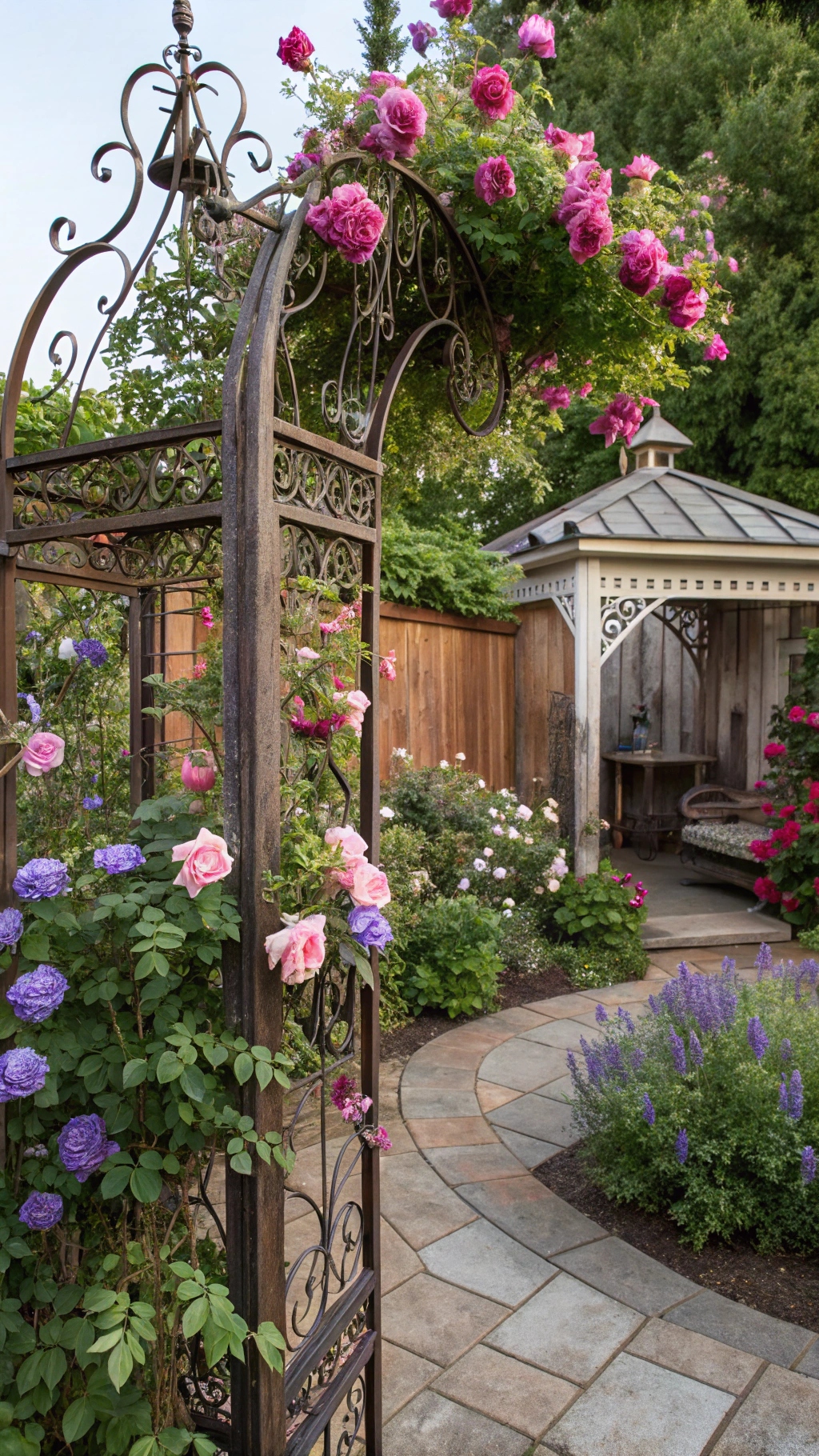
Climbing plants bring natural charm and structure to a garden, while trellises and arbors serve both a practical and aesthetic role. These structures provide a steady framework that encourages vines and flowering plants to grow in a defined, attractive pattern. Gardeners often use these supports to create living vertical gardens that add depth and interest to outdoor spaces. Climbing plants enhance the garden’s texture and offer a unique way to maximize limited space, all while serving as living artwork.
Benefits of Trellises and Arbors
Trellises offer a solid base for plants, guiding them upward in an organized display. Arbors define entryways and create inviting passageways between different garden zones. Both types of structures allow plants to flourish in a controlled manner, contributing to a balanced landscape that integrates functionality and design. Their presence not only supports plant growth but also introduces a refined visual element to the outdoor area.
Best Plants for Climbing Structures
Roses lend a classic, romantic feel with their vibrant blooms and pleasant scent. Clematis adds bursts of color and delicate textures, while wisteria provides cascading clusters of flowers that capture the eye. Honeysuckle introduces a subtle fragrance and soft foliage, rounding out the selection. These plants, when supported by sturdy structures, create living artworks that evolve with the seasons.
Design Inspiration
Opt for intricate iron trellises that offer a decorative yet robust framework, or choose rustic wooden arbors that add warmth and tradition to the setting. Small accents like subtle lighting or tastefully chosen planters can further highlight these supports. The interplay between natural growth and well-designed structures results in a garden that balances organic beauty with artistic precision.
Decorative Garden Structures: Art Meets Landscape Design
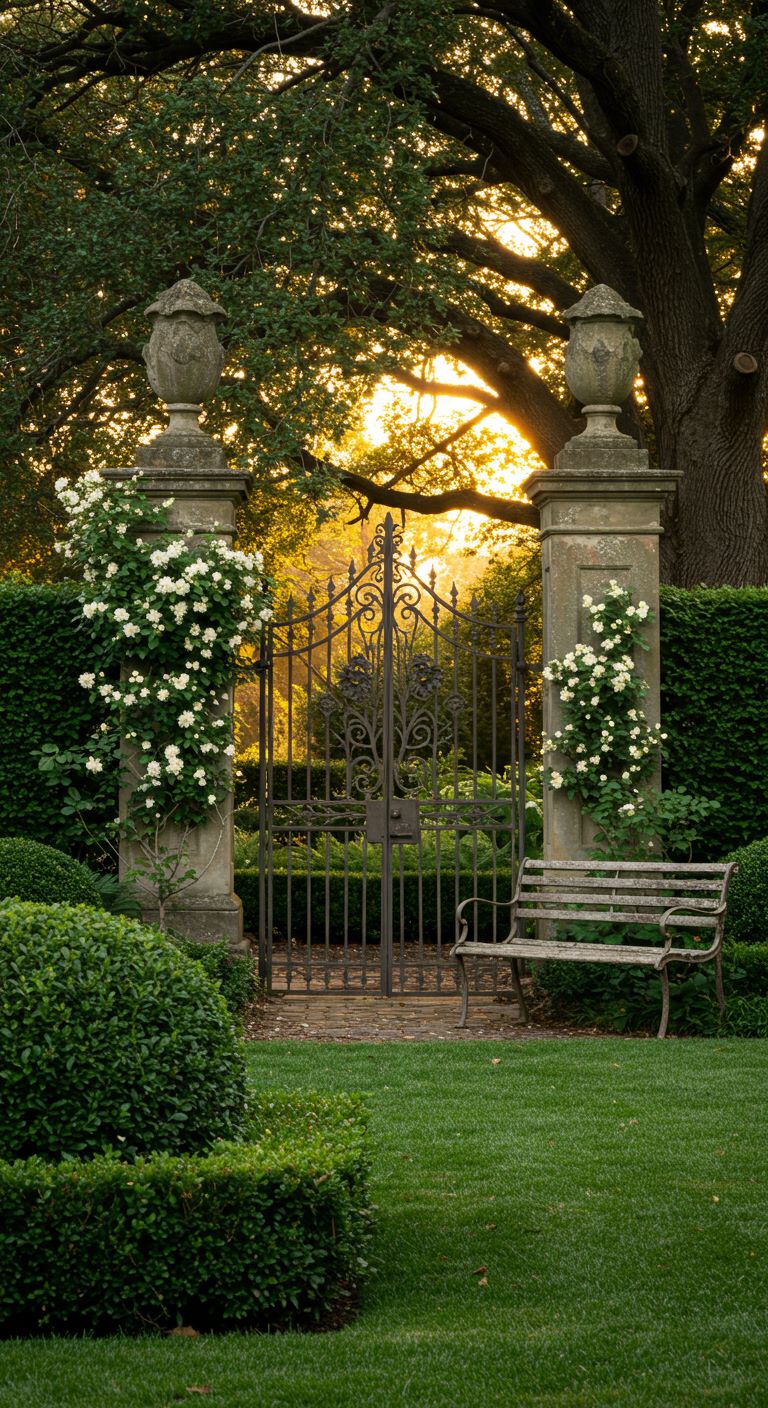
Decorative elements in a garden serve as standalone art pieces that captivate the eye and spark conversation. These structures differ from functional supports because their primary role is to enhance visual appeal. Ornamental features like sculptural obelisks, artistic gates, and standalone benches can become the focal point of a garden. They provide a striking contrast to the natural elements, adding layers of texture and color that elevate the overall design.
Decorative vs. Functional
Unlike supports for climbing plants, decorative garden structures do not serve a direct practical purpose. Instead, they stand out as works of art. Ornamental gates create a sense of grandeur and invite visitors to explore the space further. Sculptural obelisks and statues can break up expansive lawns or define pathways, turning a simple garden into an engaging outdoor gallery.
Case Studies and Design Ideas
Several installations illustrate the impact of decorative elements. Kinetic wind sculptures, for example, add movement and energy to a space, catching light and shadow in ever-changing patterns. Mosaic-adorned benches offer both a place to sit and an artistic statement, merging utility with visual interest. These case studies demonstrate that integrating art into garden design can transform a landscape into a dynamic and personalized environment.
How to Incorporate Art
When adding decorative pieces, consider the scale, color, and material to ensure they complement the garden rather than overwhelm it. Mixing bold sculptures with softer natural elements creates balance and harmony. Placement is key; pieces should feel intentional and enhance the natural flow of the garden. Use subtle lighting or natural shade to accentuate these features during the evening. Thoughtful arrangement ensures that each element contributes to a unified design that celebrates both art and nature.
Cottage and English Garden Structures: Timeless Charm
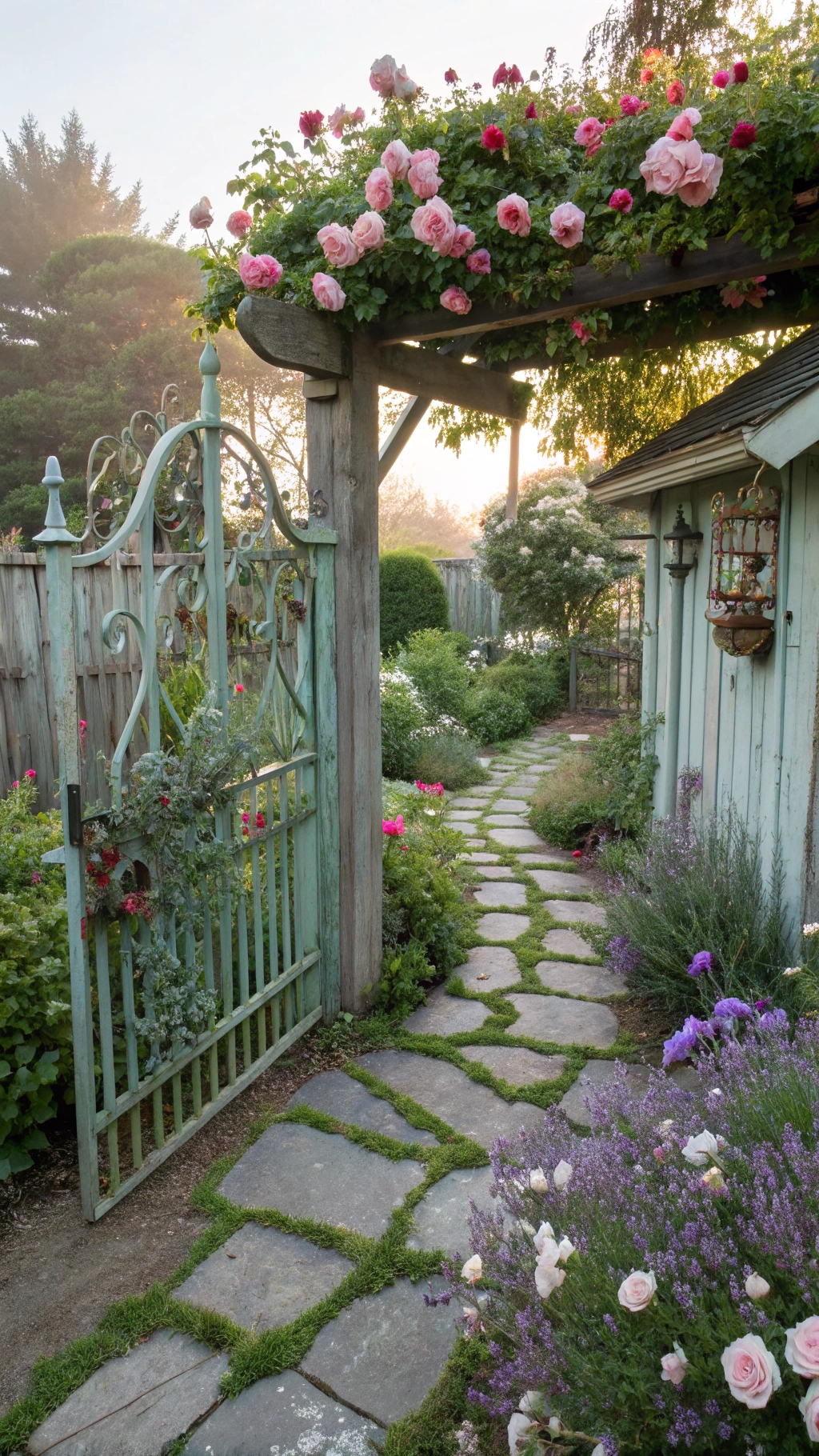
Cottage and English garden styles bring warmth and nostalgia to outdoor spaces. Whimsical layouts mix informal design with thoughtful details. Charming elements evoke a bygone era where every corner invites quiet reflection and soft conversation. Gardens using these styles feature gentle hues, lush blooms, and winding paths that offer a relaxed, storybook feel.
Characteristics of Cottage Gardens
Designs favor asymmetry and natural curves that let plants grow freely. Soft pastels mingle with vibrant wildflowers, while meandering stone paths create a sense of discovery. Quaint water features and vintage ornaments add subtle character without overwhelming the space. A balanced mix of textures and colors results in an environment that feels both unplanned and lovingly curated.
Popular Structures
Traditional archways, weathered wrought-iron gates, and trellises blanketed in roses define these settings. Handcrafted pergolas and rustic fences serve decorative and practical roles. Structures with aged finishes blend seamlessly into the garden’s natural backdrop. Each element works together to create a harmonious design that unites function with artistic expression, evoking a sense of history and comfort.
Plant Pairings
Thoughtful plant combinations enhance the overall charm. Climbing roses paired with ivy form a soft, layered look, while lavender and ornamental grasses introduce contrasting colors and aromas. Seasonal blooms provide bursts of color, ensuring that every area holds visual interest throughout the year. A well-planned mix of flora transforms the garden into a living tapestry of texture and fragrance.
Contemporary Garden Structures: Sleek Minimalism
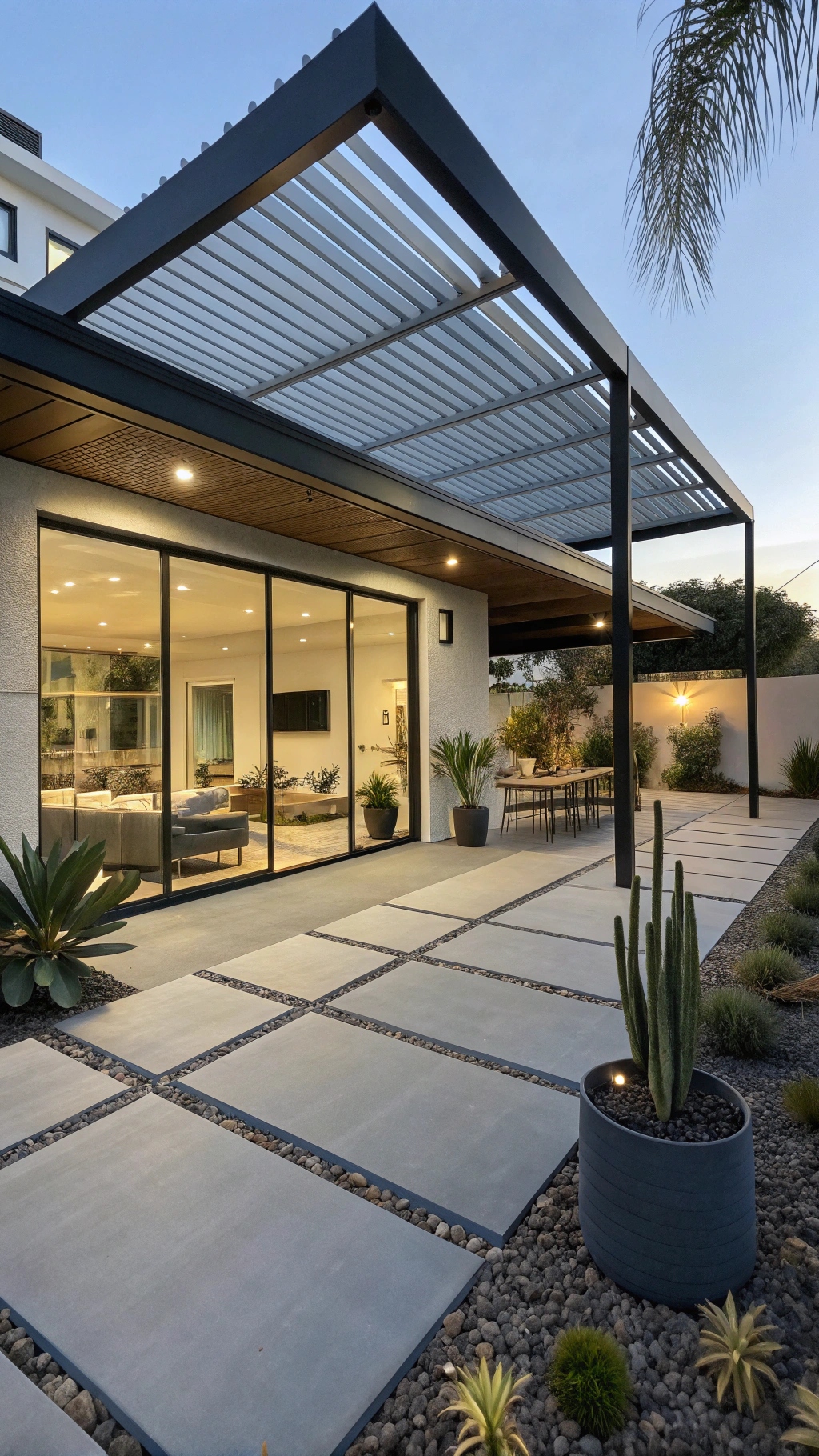
Contemporary designs highlight clean lines and open spaces, emphasizing simplicity and functionality. Modern structures use industrial materials and geometric forms to create refined outdoor environments. A minimalist approach lets natural elements shine while each component serves a clear purpose. The result is a balanced, uncluttered space that feels both modern and inviting.
Modern Trends
Current styles favor modular layouts built with sustainable materials. Smooth surfaces, simple forms, and neutral tones form the basis of contemporary garden design. Industrial elements merge with nature to create a balanced setting that appears fresh and uncluttered. Each structure is designed with clarity in mind, producing an environment that is both practical and aesthetically pleasing.
Innovative Designs
Adjustable pergolas with movable slats, glass-walled greenhouses, and sleek sunrooms showcase modern innovation. Geometric patterns and open frameworks maximize natural light and air circulation. Designs focus on creating functional spaces that also deliver visual impact. Every element is crafted to meet everyday needs while contributing to a cohesive, modern look that transforms outdoor living.
Maintenance Tips
Modern materials such as steel and glass require regular upkeep to maintain their sleek appeal. Routine cleaning and minor repairs help preserve surfaces and ensure continued functionality. Weather-resistant finishes reduce long-term maintenance challenges. A planned maintenance schedule keeps these structures looking pristine, extending their lifespan and preserving the garden’s contemporary charm.
Enclosed Garden Structures: Microclimates and Raised Beds
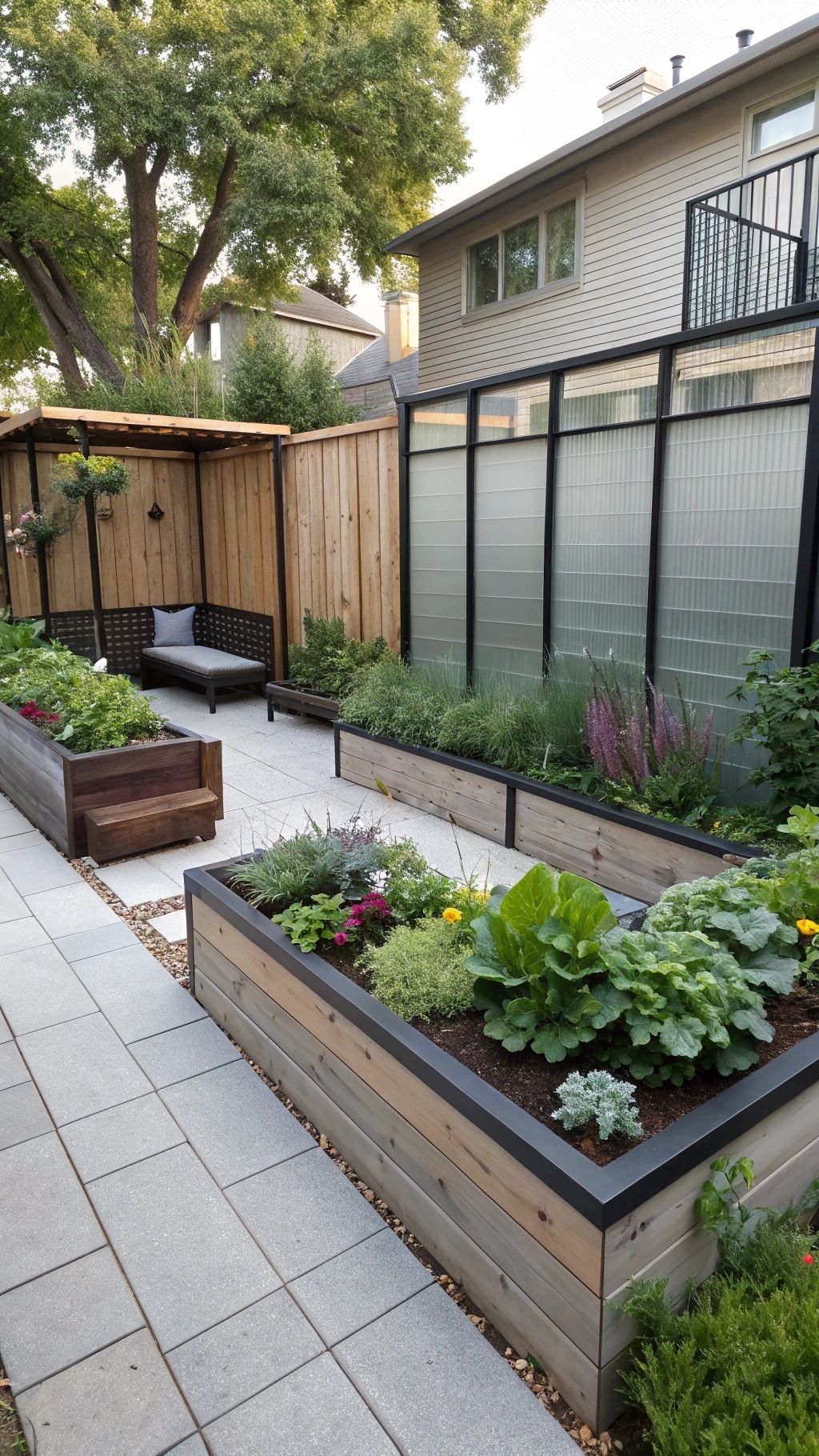
Enclosed garden structures serve multiple functions in outdoor spaces, offering protective barriers from insects, unpredictable weather, and curious onlookers. Homeowners can create favorable microclimates that support plant growth while enjoying a controlled gardening environment. Raised beds with enclosures allow for precise management of soil conditions and moisture levels, encouraging healthier vegetables and ornamental plants. Gardeners often choose these designs to safeguard sensitive flora, ensuring that pests and harsh weather do not disturb the growing process.
Benefits include improved plant health, consistent moisture retention, and reduced risk of pest infestations. Structures can feature adjustable panels or retractable walls, providing flexibility during different seasons. Thoughtful designs incorporate proper ventilation and drainage systems, ensuring that enclosed areas receive enough air and sunlight. Homeowners may add decorative screens or integrated seating to create a multi-functional space that enhances both aesthetics and utility. Enclosed setups prove ideal for vegetable patches, herb gardens, and delicate flower beds that require extra protection.
Practical planning involves mapping out the area, selecting weather-resistant materials, and ensuring access to natural light. A well-executed enclosure not only promotes plant well-being but also transforms a garden into a personal retreat. Successful designs merge functionality with visual appeal, turning a modest outdoor area into a vibrant microcosm of nature.
Maximizing Small Spaces: Corner and Vertical Structures
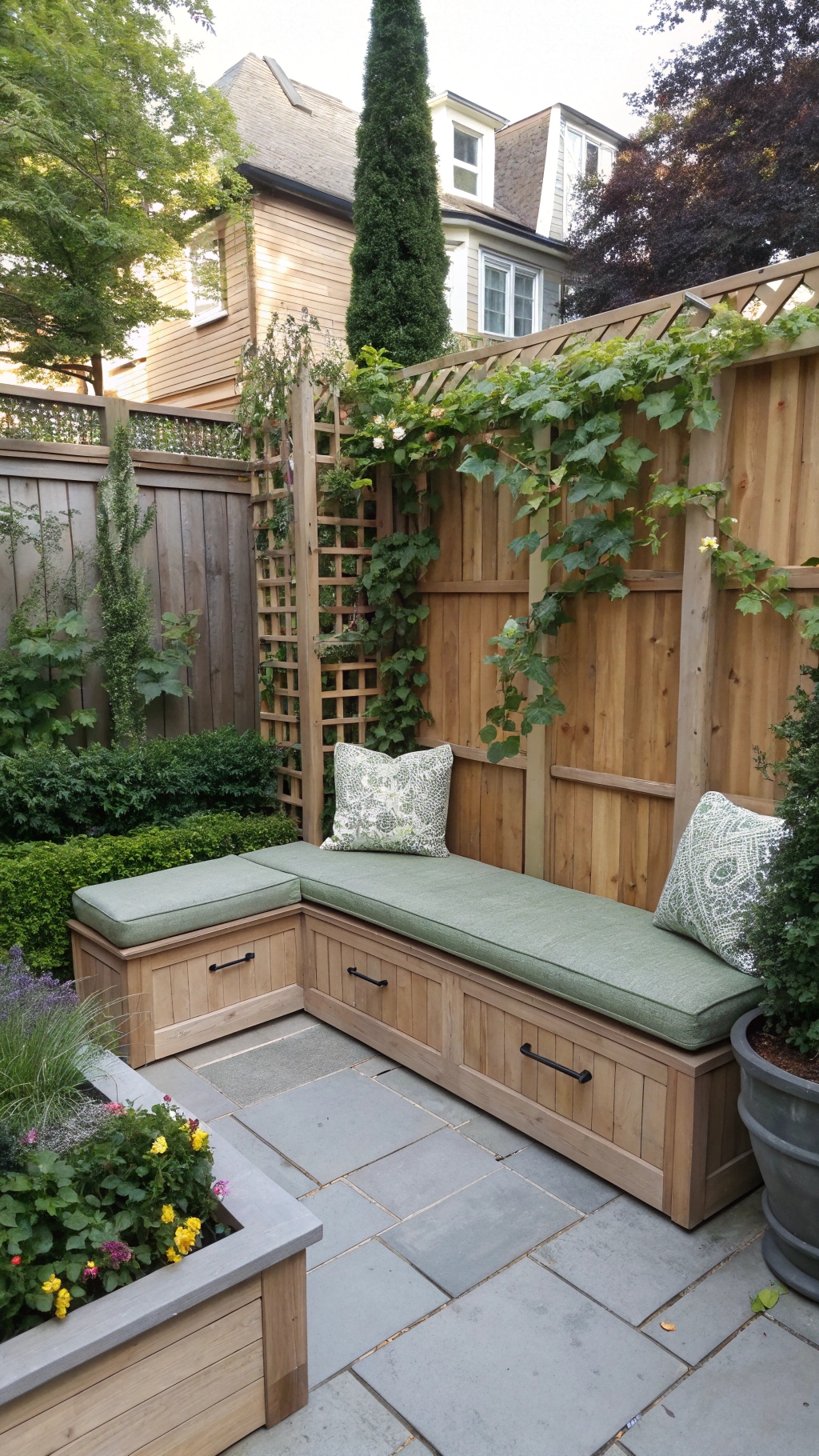
Maximizing available space requires creativity, especially in compact backyards. Unused corners and vertical surfaces offer unique opportunities for adding structure and function without overcrowding the garden. Corner arbors, tiered planters, and vertical gardens not only optimize space but also introduce dynamic visual elements. Homeowners can incorporate a well-designed corner bench with built-in storage to create an inviting spot for relaxation while efficiently using every inch available.
Vertical solutions such as tall obelisks, multi-tiered trellises, and cascading planters draw the eye upward, giving an impression of spaciousness. Structures may serve dual purposes by supporting climbing plants or acting as decorative focal points. DIY projects allow for personalization, enabling gardeners to construct unique features that align with their style. Instructions for building a corner bench encourage hands-on involvement, adding a personal touch to the garden while enhancing functionality.
Strategic planning transforms tight areas into lively hubs. Placement of vertical and corner structures must consider factors such as sunlight, access, and overall flow of the garden. Effective designs integrate storage, seating, and decorative accents that complement natural surroundings. Small spaces, when utilized thoughtfully, can host vibrant gardens that reflect both efficiency and creativity, proving that size does not limit potential
Final Thoughts
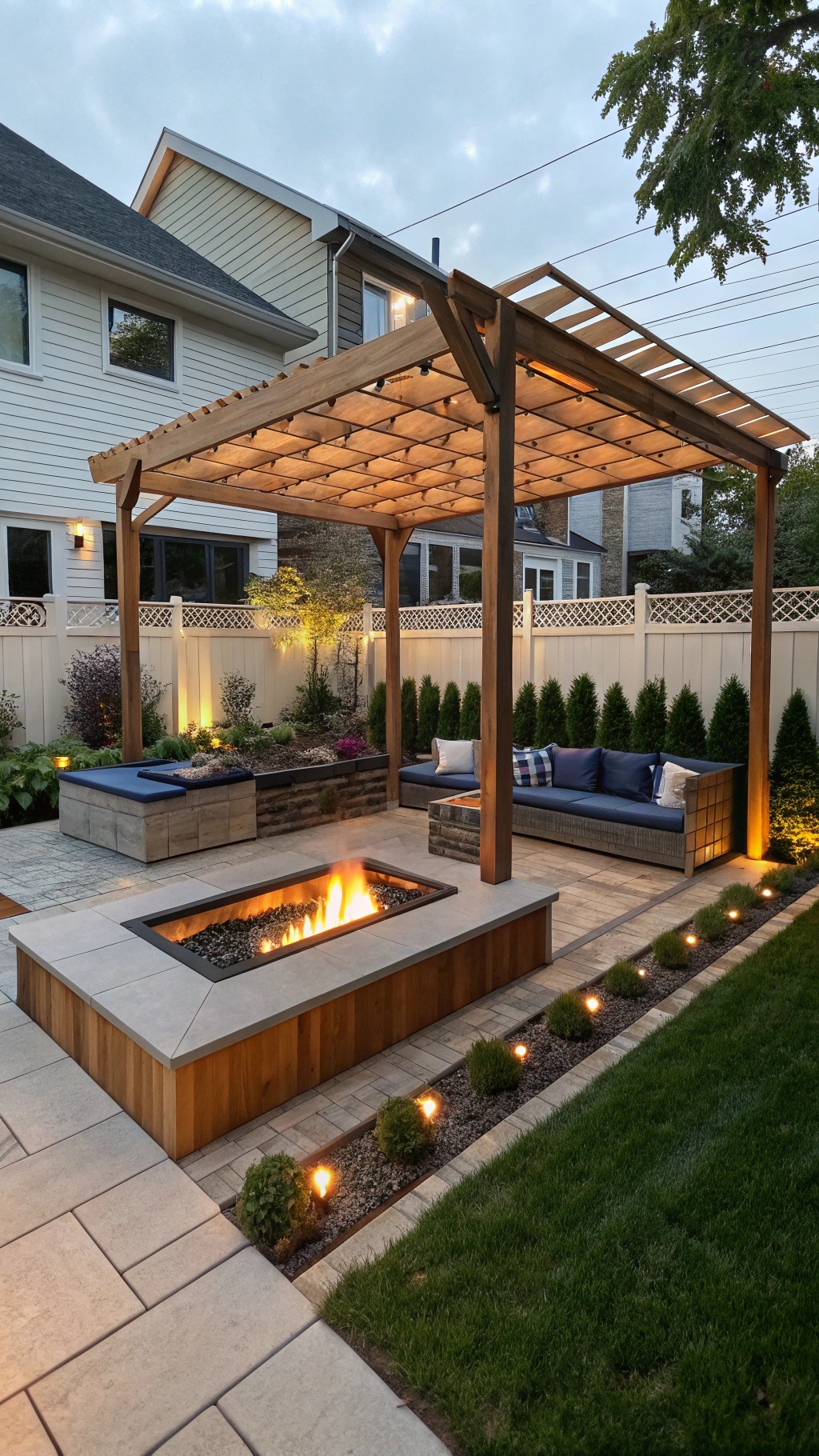
Garden structures present endless opportunities to redefine outdoor spaces, merging function and beauty into cohesive, personalized retreats. Outdoor areas become extensions of the home when features like pergolas, enclosed raised beds, vertical gardens, and decorative accents work together. A diverse range of structures encourages creativity, allowing each garden to mirror the personality and practical needs of its owner. Thoughtful integration of various elements results in a space that welcomes relaxation, entertaining, and everyday enjoyment.
Successful garden design balances artistic expression with everyday utility. A mix of traditional and modern styles can create visual intrigue while ensuring practicality. Homeowners who experiment with different structures may find that combining several ideas leads to a more dynamic and versatile garden. Considerations such as maintenance, environmental conditions, and plant compatibility play significant roles in crafting a sustainable outdoor space. Planning carefully and choosing appropriate materials will help maintain the garden’s charm over time.
Outdoor spaces continue to inspire innovation and creativity. As new trends emerge, structures will evolve to meet changing needs and preferences. Which structure will you choose to redefine your outdoor space? For more inspiring tips on enhancing your garden, check out our guide on Outdoor Living Spaces.
